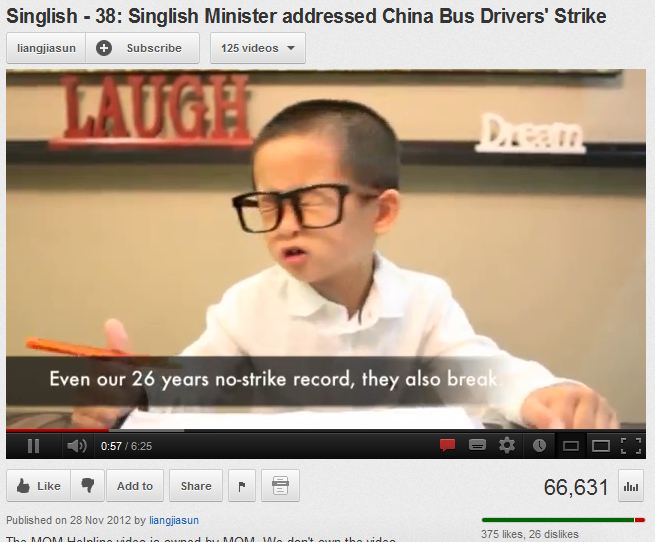Last week, on 26 November 2012, 171 SMRT bus drivers from the People’s Republic of China (PRC) staged a strike at their Woodlands dormitory. This was Singapore’s first industrial strike in 26 years. They initiated the strike because they were unhappy over the lower wages they were receiving when compared to Malaysian bus drivers, as well as the poor conditions of their dormitories, some of which had bed bugs.
After negotiating for the afternoon, the bus drivers obtained reassurance from senior management that their grievances would be addressed within a week, and they would return to work in the meantime. However, on the following day, 88 bus drivers from the PRC again staged a strike. Some of them were repeat strikers from Monday whereas others were new.
As expected, Singapore’s state-controlled media went into overdrive. They initially described the developments as bus drivers from the PRC who “refused to go to work” or “industrial action”. None were willing to call the strike, a “strike”. In response, Singaporeans on social media lampooned the mainstream media, ridiculing them for the myriad of ways in which they could replace the word “strike”.
It was also the perfect chance for the newly minted Acting Minister of Manpower Tan Chuan Jin to burnish his credentials. Formerly a Brigadier-General in the Singapore Armed Forces, he was responsible for leading Singapore’s relief efforts to Meulaboh, Aceh, when the Indian Ocean Tsunami struck on Boxing Day 2004. He got into Parliament only in 2011, competing in the Marine Parade Group Representative Constituency team lead by Goh Chok Tong. He has been touted as a future Deputy Prime Minister. This time around, he was responsible for revealing the iron fist within the velvet glove.
It is interesting to note the rhetoric in which the Minister and his Ministry chooses to use at such times to manage public perception. In his first press conference on the incident on 27 November, Minister Tan declared that the strike was illegal because the drivers flouted the law by not giving 14 days of notice to their employers. This, he said, meant that the drivers were “taking matters into their own hands”. He also mentioned that regardless of their grievances, “there are right ways and wrong ways to handle these concerns”, and that “taking the law into your own hands is wrong”. It seems that the neat division between “right” and “wrong” mirrors the consistent rhetoric in other mainland Southeast Asian countries.
Subsequently, on 1 December, the Ministry of Manpower further revealed that they were to charge 5 bus drivers for instigating the strike (at this time of writing, one has already been sentenced to six weeks jail), and had revoked the work permits of another 29 bus drivers who were repatriated back to China over the weekend.
Three observations from these developments are worthy to note. First, the speed at which the alleged “trouble makers” were identified, arrested, charged and repatriated suggests that the Singapore state’s capacity for coercive action against mass mobilization is still very much alive. Second, the manner in which the mainstream media parroted the Ministry’s stance on the illegality of the workers’ actions, disregarding the injustice of the law at stake, signals to other foreign and local workers in Singapore that they were clearly and rightfully emancipated of their rights to strike, and that they should stay in their “rightful” place. Third, the majority of Singaporeans continue to express their agreement with the system of suppressed rights to mobilize and strike, judging by the snap poll conducted by a government feedback agency, as well as their generally muted response to the incident.
To the extent that these developments and observations can speak about the prospects of democratization in Singapore, one must surely end on a somewhat pessimistic note. They suggest that the majority of Singaporeans continue to wish to live their lives within the political comfort zones, and are inimical to the “disruptions” caused by mass mobilization. At best, they limit themselves to creating and sharing parody videos on the web to push the boundaries.
 Facebook
Facebook  Twitter
Twitter  Soundcloud
Soundcloud  Youtube
Youtube  Rss
Rss 